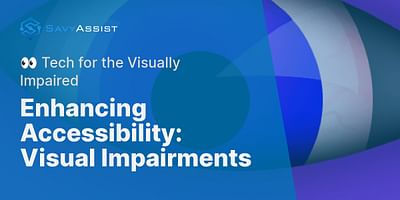Ryan is a seasoned software engineer with a passion for accessibility. With an impressive portfolio of projects focused on rendering technology more user-friendly for individuals with disabilities, he continuously seeks innovative solutions to enhance user interaction. His expertise spans from the development of screen readers and one-handed keyboards to speech-to-text software.
Hey there! If you're looking for adaptive equipment for blind individuals, you've come to the right place. There are several fantastic options available that can greatly enhance accessibility and independence for people with visual impairments. Let me walk you through some of the most popular ones:
1. Screen Readers: Screen readers are software programs that convert text on a computer screen into synthesized speech or braille output. They allow blind individuals to navigate websites, read documents, and use applications. Some of the best screen readers for blind users include JAWS (Job Access With Speech), NVDA (NonVisual Desktop Access), and VoiceOver (built-in on Apple devices).
2. Braille Displays: Braille displays are tactile devices that allow blind individuals to read digital content through touch. These devices have rows of small pins that move up and down to form braille characters. They can be connected to a computer or mobile device and work in conjunction with screen readers to provide a braille output.
3. One-Handed Keyboards: For individuals with limited dexterity or the use of only one hand, one-handed keyboards can be a game-changer. These keyboards are designed with a compact layout, allowing users to type efficiently using a single hand. They often come with customizable keys and ergonomic designs for added comfort.
4. Speech-to-Text Software: Speech-to-text software, also known as voice recognition software, allows blind individuals to dictate their thoughts and have them converted into written text. This technology is particularly useful for writing emails, documents, or even controlling a computer through voice commands. Popular speech-to-text software options include Dragon NaturallySpeaking and Google Docs Voice Typing.
5. Mobile Apps: There are numerous mobile apps available for blind individuals that offer a wide range of functionalities. These apps can assist with tasks such as object recognition, navigation, reading printed text, identifying colors, and much more. Some popular apps include Be My Eyes, Seeing AI, and Voice Dream Reader.
6. Accessible Web Design: Web designers can make websites more accessible for blind individuals by incorporating features like proper heading structure, alternative text for images, keyboard navigation, and clear link descriptions. These design practices ensure that blind users can easily navigate and understand the content on websites using screen readers.
Remember, this is just a snapshot of the adaptive equipment available for blind individuals. The best choice for you will depend on your specific needs and preferences. It's always a good idea to consult with a professional or try out different options to find the perfect fit.















